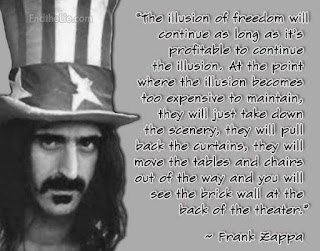The titular character, Poppy the Living Doll
Poppy Playtime is a horror video game series that, for some reason, is popular among children. It consists on 3 chapters telling the story of an evil toy factory owned by the corporation Playtime CO. The factory has been abandoned after the disappearance of all the workers, and the player character, a former employee, decides to find out what happened to them.
Poppy Playtime is a mascot horror game, games characterized because the player character is persecuted by a menacing mascot which was aimed towards children for some time before its corruption. Most of this games involve an evil corporation infusing people's souls into the mascots who then become aggressive and deadly.
Poppy Playtime and its characters are extremely popular and I think parents should know what this game is all about.
The Lore
The story of the game is not resolved yet because the series has not ended. But here we will write about what we know.
Playtime Co was a famous toy factory that was heavily involved in dodgy charity projects for orphans. It's founder, Elliot Ludwig, had a personal tragedy that greatly affected him: his daughter died.
It seems that Elliot became obsessed with resurrecting people and so began experiments within his factory. He was interested on transhumanism and wanted to artificially expand the human life.
One of the notes which we find referencing this experiments suggest doing experiments with poppy flowers and rats, suggesting to expand the experimentation to larger subjects.
Throughout the games we realize that they experimented on orphan children, testing their abilities with games and keeping them inside an underground facility called "The Playcare". To cover for this operation, Playtime convinced the employees to adopt the children, but it is doubtful that they actually gave the kids a new family.
During the gameplay we resolve different puzzles to advance towards the factory, while avoiding evil toys prowling around trying to eat us. This puzzles are solved with a machine called the grab pack, which consist on two mechanical hands capable of extending and conducting electricity.
This toys used to be humans, adults and children alike, but using a still unknown process they were turned into toys. This toys are carnivorous and have the capacity to bleed. Because of the abuse they endured, the toys became resentful towards Playtime.
Not having a problem with abusing children, Playtime also had extremely careless worker security protocols. In a spin-off from the other games, Project Playtime, workers are constantly threatened by the larger toys.
It is revealed in Chapter 3 that all employees (innocent and guilty) were executed by the living toys during an event known as "The Hour of Joy". This event was orchestrated by the Prototype, some sort of evil amalgamation of toys and who is the main antagonist of the series. The Prototype leads some sort of cult and kills the toys who resist his mandates, feeding them to the others. It seems that the Prototype was commanding both parties all along, but nothing has been confirmed.
The Characters
Huggy Wuggy is the most popular character. If your child has asked you for an ugly, elmo-like blue-haired humanoid doll with enormous teeth, this is Huggy Wuggy. He doesn't speak and it's extremely aggressive. He appears on Poppy Playtime 1, and dies after falling from a great height and hitting his head with a pipe.
Kissy Missy looks like Huggy Wuggy, but she is pink and friendly. She was involved in The Hour of Joy but seems to have changed her ways.
Poppy Playtime is a creepy but sweet doll with red hair and blue eyes. During her commercial, the company creepily suggests that Poppy is alive. Poppy has been rumored to be Ludwig's daughter, now trapped into this creepy and mysterious doll. She helps the player character to finish the second and third game, introducing him to the factory and asking for his help to defeat the Prototype.
Mommy Long Legs is the main antagonist for the second game. She torments the player with multiple infantile games where if you lose you die. Whether is being smashed by a plush rabbit with cymbals or swallowed by mini huggy wuggies or a caterpillar pug, Mommy Long Legs will either annoy you or terrify you, depending on your age.
Catnap is the antagonist for Poppy Playtime chapter 3. He is a giant skinny purple cat that releases a gas that drugs people, causing them sleep and hallucinations. He haunted the children with the gas, and may be seen as a pale skeletal figure with reptilian legs and his jaw hanging extremely low
It seems that this cat is all about heroin, but I could be wrong. Poppy flowers are commonly found around the game and are associated with the experiments.
Catnap worships the Prototype, because the entity saved his life once. However, this doesn't stop the amalgamation from killing Catnap by piercing his skull with his hands, when he fails to kill the player character.
Boxy Boo is one of the characters of Project Playtime. He is a box with a reptilian face and springs with hands as feet as his extremities. He swallows people.
The Smiling Critters are a plushie collection that releases scents. The player character is swarmed by these carnivores in chapter 3; their larger cousins are decimated by Catnap.
Other characters include Bron, Bunzo Bunny, Pugapillar, Daisy, Catbee and Candy Cat; these are usually found dead around the factory.
Violence and Sex?
Despite being a horror game, Poppy Playtime has no brothels, no naked people, no swear words, no references to obscure sexual activities and no prostitutes, unlike many of the games I was familiar with as a kid.
The violence, on the other hand, is something different. Originally, Chapter 1 and Chapter 2 were quite tame with it. There were bloody toys and Mommy Long Legs dies swallowed by a meat grinder, but now things are getting heavy with Chapter 3. On the premises you can find bloody corpses of toys everywhere, sometimes hanging from strings like if this were a butcher house. Dark CGI videos imitating old VFX tapes are released as trailers or found within the facility.
Chapter 3 is way darker than any of the other games and is not afraid of showing the depressing side of the story. This is about mistreated children, mistreated carnivorous toys, and insultingly evil behavior.
A toy dog named Dogday (very cute, by the way) is slowly being eaten by other plushies. His legs are missing and ripped, fleshy cloth covered in blood hangs from him. As he dies, he tells the player character those who rebel against Prototype meet similar fates. Dogday is eventually infested by hungry plushies who devour his insides. He dies and his skin is used by the critters to hunt the player character.
Another being is a toy teacher at the Playcare school, Ms. Delight. She and her sisters were trapped in there, and eventually succumbed to cannibalism. She walks around holding a ruler with spiky pencils as a mace, and part of her face is missing.
Yes, all very palatable for little brains.
The Most Concerning Issues
For me the most concerning thing would be the fact that the toys are given life, because only God can give life. We will speak more about this in a future post, when the series is finished and we see exactly how it is that the toys are alive.
While I recognize conflict and violence are an important part of our existence, I believe violence in video games should be limited, for while we may recur to it in cases of necessity, endlessly indulging in gory content will have negative effects on the mental health, specially on the mental health of children, who are impressionable and easy to scare.
On the other hand, I would like to warn parents that there are many fetish videos out there including the titular characters, especially Huggy Wuggy and those akin to him. This are fan-made and unrelated to the main video game, and arguably more harmful than the game itself.
Fortunately, none of this games is free and children can't just discharge them without their parents. They can, however, see the game in Youtube, where multiple people film themselves playing Poppy and anyone can access their videos.
However, I do not want parents to panic, just to be aware that Poppy Playtime exists and some people seem to be very interested on having your children playing this game and buying it's merchandise.
All that is needed is a close connection to them and a correct vigilance.


















